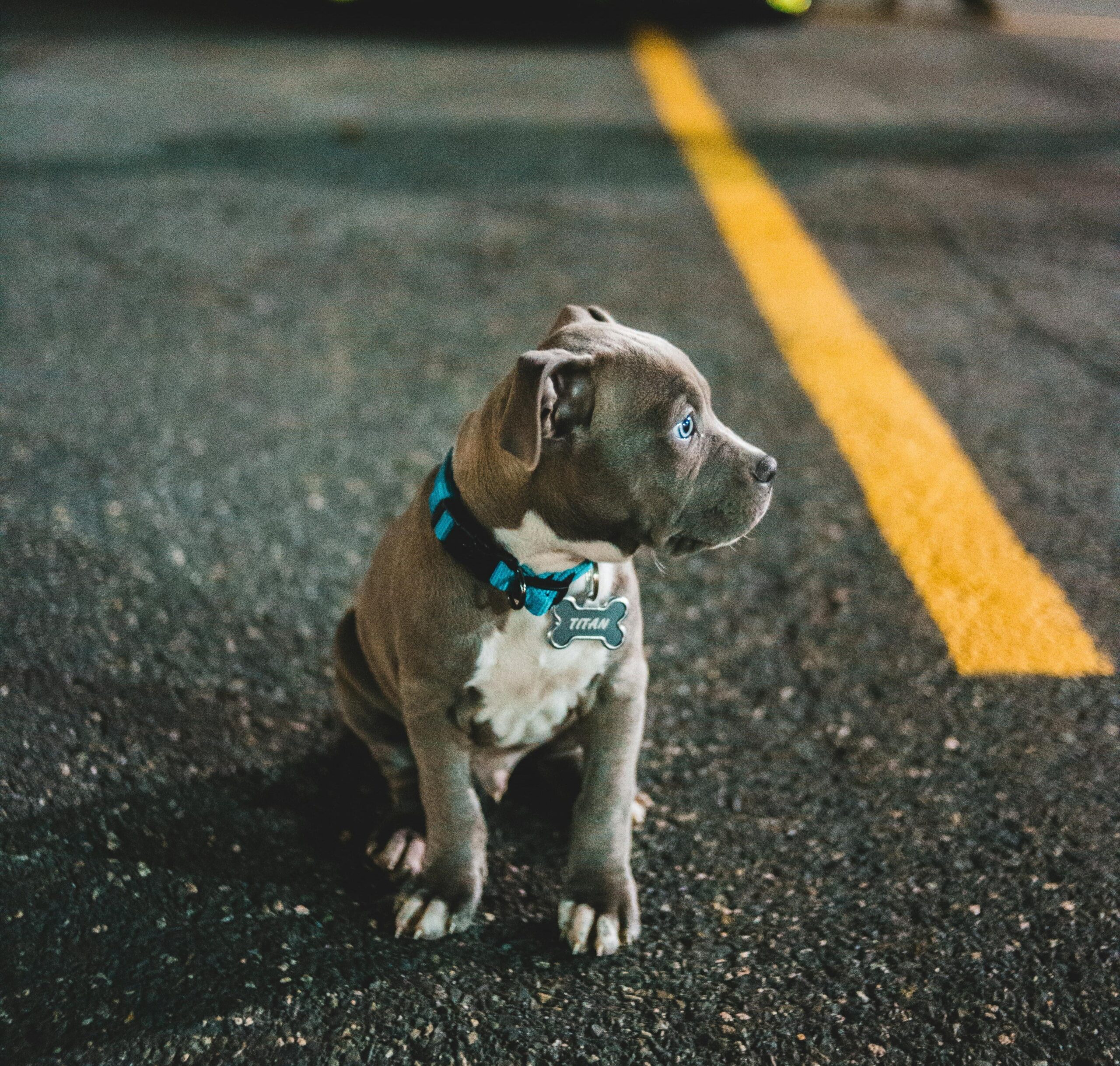Bringing a new puppy into your home is a delightful experience, but the challenge of settling them at night can test even the most patient pet owner.
The nighttime routine for a puppy can be a crucial aspect of their overall well-being and your peace of mind.
In this comprehensive guide, we’ll explore 15 expert tips to help you navigate the often tumultuous task of how to settle a puppy at night.
From establishing a comforting routine to addressing their needs, these tips aim to make bedtime a peaceful and enjoyable experience for both you and your newest family member.
Table of Contents
15 Essential Tips: How to Settle a Puppy at Night

1] Create a Cozy Sleeping Area
Ensuring your puppy has a cozy and comfortable sleeping area is paramount for fostering a restful night’s sleep.
Consider investing in a high-quality, orthopedic dog bed that provides ample support, especially for breeds prone to joint issues.
Experiment with different textures, such as memory foam or plush bedding, to identify what your puppy finds most soothing.
Placing the bed in a quiet, draft-free corner offers your puppy a sense of security, making it more likely for them to choose that spot for their rest.
2] Establish a Bedtime Routine
Consistency is crucial when establishing a bedtime routine for your puppy.
Engaging in calming activities before bedtime helps signal to your puppy that it’s time to wind down.
This routine can include a short walk to allow them to relieve themselves, followed by gentle play or cuddle time.
Incorporate a specific phrase or command associated with bedtime, creating a verbal cue that reinforces the routine.
Consistency in the timing of these activities further enhances predictability, making bedtime a more comfortable experience.
Maintain a regular bedtime, even on weekends. Dogs thrive on routine, and a consistent schedule contributes to a sense of security.
3] Limit Evening Stimulants
Creating a calm environment in the evening involves not only reducing stimulating activities but also considering your puppy’s diet.
Limit access to food and water close to bedtime to decrease the likelihood of midnight accidents.
Additionally, be mindful of treats containing caffeine or high-energy ingredients, as these can contribute to restlessness.
By establishing a calm atmosphere and monitoring your puppy’s evening intake, you promote a conducive environment for a peaceful night’s sleep.
4] Potty Break Before Bed
In addition to a consistent bedtime routine, incorporating a final potty break right before bedtime is essential.
This preventive measure minimizes the chances of midnight accidents and ensures your puppy is comfortable before settling down.
Consistently reinforcing the connection between bedtime and a pre-sleep bathroom break helps your puppy understand the expected nighttime routine, contributing to a more undisturbed sleep.
5] Comforting Sleep Sounds
Introducing comforting sleep sounds, such as white noise or gentle music, adds an extra layer of tranquility to your puppy’s sleeping environment.
The rhythmic sounds help drown out potential disturbances, creating a soothing ambiance.
Consider using a dedicated sleep playlist or a white noise machine specifically designed for pets.
Monitoring your puppy’s response to different sounds allows you to tailor the auditory experience to their preferences.
White noise machines or soft music can create a comforting background noise, minimizing external disturbances that may disrupt your puppy’s sleep
6] A Warm Snuggle
Providing your puppy with a soft toy or blanket for comfort is not only about the item’s texture but also about creating a familiar and secure association.
Opt for items that are machine washable to maintain cleanliness.
You can even rotate between a few toys or blankets to prevent overattachment to a single item.
Spritzing the item with a calming, pet-safe fragrance can enhance the soothing effect, creating a comforting bedtime ritual for your puppy.
7] Dim the Lights
Dimming the lights in the evening is a visual cue that encourages relaxation for your puppy.
Use soft, warm-colored lighting to create a calming atmosphere.
Avoid harsh overhead lights, and instead, opt for gentle, indirect lighting.
This practice complements the overall winding-down process, signaling to your puppy that it’s time to transition from daytime activity to a restful night’s sleep.
Consider using a nightlight in the room to provide a subtle and comforting glow. This can be particularly reassuring for puppies who may be adjusting to a new environment
8] Avoid Overstimulation
In the hours leading up to bedtime, engaging in calm interactions with your puppy is vital for a smooth transition.
Avoid vigorous play or activities that may elevate their energy levels. Instead, focus on gentle petting, soothing massages, or a quiet bonding session.
Gradually decreasing the intensity of interactions helps your puppy shift into a more relaxed state, preparing them mentally and physically for sleep.
9] Gradual Crate Introduction
If using a crate, introducing it gradually with positive associations is a strategic approach.
Begin by placing treats and toys inside the crate during the day, allowing your puppy to explore at their own pace.
Gradually extend this exploration time, ensuring your puppy associates the crate with positive experiences.
Introduce the crate into the bedtime routine, incorporating treats and verbal praise, to establish it as a secure and comforting space for nighttime rest.
10] Comforting Presence
Considering sleeping near your puppy during the initial nights can be a reassuring presence that eases the transition.
This approach provides a sense of security and comfort for your puppy, reinforcing the positive association with bedtime.
As your puppy becomes more accustomed to the routine, you can gradually adjust sleeping arrangements based on their comfort level and your preferences.
Sleeping near your puppy in the early days can provide comfort and security, fostering a sense of connection and reducing anxiety
11] Daytime Exercise
Ensuring your puppy gets enough daytime exercise is fundamental for promoting a more restful night’s sleep.
Tailor activities to your puppy’s breed and energy level, incorporating both physical and mental stimulation.
Engaging in interactive play, puzzle toys, and short training sessions expends excess energy, making it more likely for your puppy to settle down at night.
Consistency in providing daily exercise contributes to a well-balanced and tired-out pup.
12] Positive Crate Association
If utilizing a crate, creating a positive association involves a gradual and positive introduction.
Make the crate an appealing space by incorporating your puppy’s favorite toys, soft bedding, and occasional treats.
Avoid using the crate as a form of punishment to maintain its positive connotation.
Consistent positive experiences within the crate reinforce its role as a secure and comfortable retreat for your puppy during the night.
13] Avoid Late-Night Play
In the approach to bedtime, steering clear of late-night play sessions is crucial.
Transition from active play to calming activities, such as gentle petting or a quiet stroll, to help your puppy wind down.
Avoid introducing new toys or engaging in overly exciting activities close to bedtime.
This gradual reduction in stimulation supports a smoother transition into the bedtime routine, preparing your puppy for a peaceful night’s sleep.
As bedtime approaches, avoid engaging in late-night play sessions. Encourage quiet and calming activities to help your puppy wind down and prepare for sleep
14] Midnight Potty Breaks
Being responsive to your puppy’s signals for a midnight potty break demonstrates attentiveness to their needs.
If your puppy signals a need to go out during the night, respond promptly and take them for a brief potty break.
Reinforce positive bathroom habits with gentle encouragement and minimal interaction, allowing for a quick return to sleep.
This responsiveness contributes to a positive nighttime experience for both you and your puppy.
15] Patience and Consistency
Settling a puppy at night is a gradual process that requires patience and unwavering consistency.
Recognize that every puppy is unique, and adjustments may be necessary based on their individual responses.
Celebrate small victories, such as nights with minimal disturbances, and maintain the established routine.
Over time, your puppy will learn to associate bedtime with a comforting and predictable routine, fostering a positive and peaceful nighttime experience.
How to Settle a Puppy at Night: FAQs
When can I expect my puppy to sleep through the night?
The timeline varies, but most puppies can sleep through the night by the age of 4 to 6 months. Consistent training and a bedtime routine contribute to this milestone.
Should I use a crate for nighttime sleeping?
Using a crate can provide a secure sleeping space for your puppy. Introduce the crate gradually and associate it with positive experiences to ensure your puppy feels comfortable and secure.
What if my puppy cries at night?
If your puppy cries at night, assess their needs. They may require a bathroom break, reassurance, or an adjustment to their sleeping arrangements. Gradual responses help address their concerns.
Can I allow my puppy to sleep in my bed?
Allowing your puppy to sleep in your bed is a personal choice. If you opt for this, ensure it aligns with your long-term preferences and doesn’t disrupt your puppy’s training.

Conclusion:
Settling a puppy at night requires patience, consistency, and understanding.
By incorporating these 15 essential tips on “How to Settle a Puppy at Night,” you’ll create a bedtime routine that ensures both you and your puppy enjoy restful nights and strengthen your bond along the way.
Remember, each puppy is unique, and finding the right combination of strategies may take time.
By following these tips into your routine with consistency and love, you’ll not only foster a sense of security for your puppy but also strengthen the bond between you and your newest four-legged companion.





